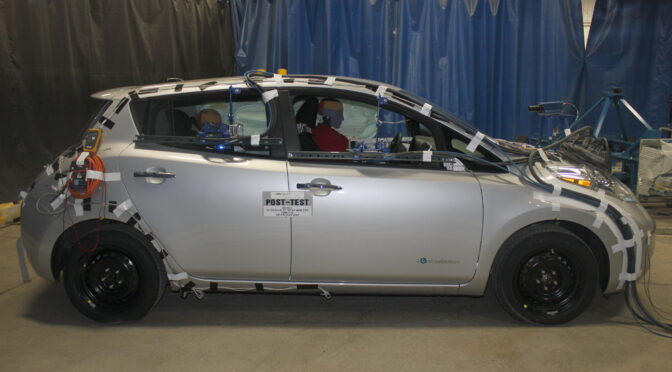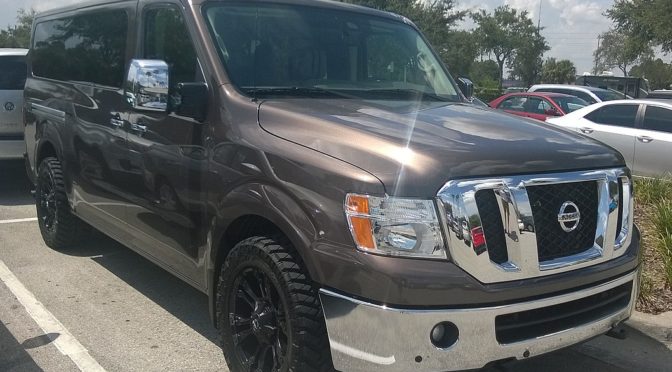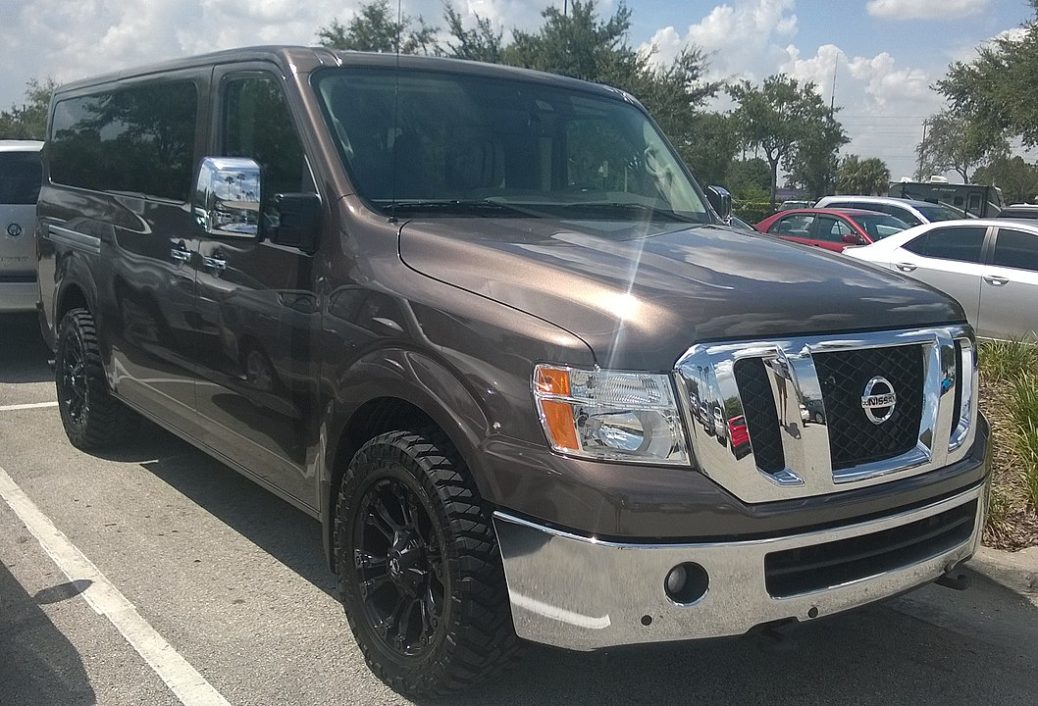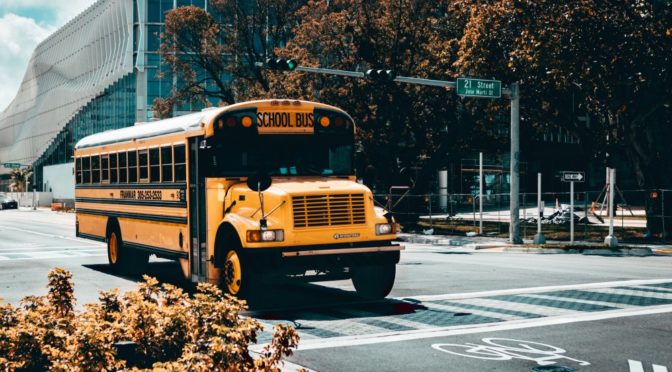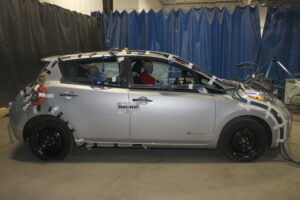
The Nissan Leaf is one of my favorite electric cars on the market due to its affordability and functionality. As car technology continues to improve, I’m happy to note that it is no longer necessary to choose between one’s safety and one’s wallet; these days, you get to keep both. I’ve written about the Leaf’s 3-across combinations here, and it can absolutely be used to haul a family of five around town and beyond without burning gasoline.
On the other hand, many families might opt for the much larger Nissan Pathfinder (or its badge twin, the Infiniti QX60. Both are midsized SUVs and both have their place, although most families would likely be able to meet much of their goals in the Leaf instead of in the Pathfinder or QX60. Many families, especially those with a safety bent, might automatically dismiss the Leaf for the Pathfinder in the mistaken belief that the Pathfinder / QX60 will be the safer choice due to its much larger size and heft–the 2014-2017 Leaf weighs around 3,300 pounds while the 2015-2020 Pathfinder typically clocks in at around 4,400 pounds. However, long time readers will note that I’ve written extensively about how the way we drive and where we drive are far more important factors in determining whether we make it home at the end of the day than what we’re driving once we’re past basic safety standards, and the IIHS continues to support this idea through their latest batch of driver death rate data. According to their sampling from the NHTSA’s Fatality Analysis Reporting System, or FARS, all three vehicles–the small electric Leaf car, the midsized Pathfinder SUV, and the midsized luxury QX60 SUV–are equally capable of keeping their drivers alive.
How do we know this? It comes from IIHS calculations on driver death rates for recently sold (2014-2017) vehicles in the US. While the calculations still fall prey to large confidence intervals and still fail to consier two of the three most meaningful factors in auto safety–how we’re driving and what we’re driving–they still provide information worth considering. This is the newest IIHS driver death rate report and it comes from the May, 28, 2020 Status Report (Volume 55, Number 2). I wrote a batch of these articles when the last report was released, and it’s already that time to write some more. I’ve previously covered the Leaf’s safety as a small vehicle here in comparison to a Prius and Volt and here in comparison to large SUVs and pickup trucks; the story will not be too different here, as the best practices described above continue to apply. Today we’ll take a look at three offerings from NIssan: the Leaf, the Pathfinder, and the QX60, which technically is an Infiniti but is still a Nissan underneath, in order to figure out whether there’s any safety advantage to putting your family in any of the three over the others.
2014-2017 Nissan Leaf – 5 driver deaths (0-14)
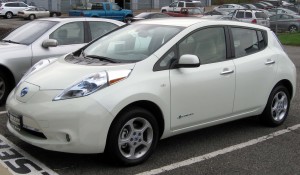 According to the IIHS report, the Nissan Leaf, a small electric car, had a driver death rate of 5 in the 2014-2017 model years, with five predicted fatalities occurring from single vehicle crashes and none from multiple vehicle crashes. These predictions were based on an exposure of 164,259 registered vehicle years and a 95% confidence bound of 0-14.
According to the IIHS report, the Nissan Leaf, a small electric car, had a driver death rate of 5 in the 2014-2017 model years, with five predicted fatalities occurring from single vehicle crashes and none from multiple vehicle crashes. These predictions were based on an exposure of 164,259 registered vehicle years and a 95% confidence bound of 0-14.
This doesn’t mean that 5 drivers died driving Nissan Leafs of the aforementioned model years between 2015 and 2018, the surveyed years in the study. Instead it means that the IIHS made a model incorporating NHTSA fatality data on 2014-2017 model year Nissan Leafs and IHS Markit Automotive (now S & P Global Mobility) data on registered Leafs to calculate driver death rates per million registered vehicle years. A registered vehicle year is the equivalent of one registered vehicle being driven for a year. The rates were adjusted for the differing risks posed by drivers by age and gender. Their analysis suggests that, for example, if 1 million drivers drove 1 million of the aforementioned Leafs for a full year in the US, we would expect 5 of them to die over the course of the year.
This is really, really good. It also echoes prior IIHS driver death rate findings for the Leaf, such as when the 2011-2014 Leaf was estimated to have a driver death rate of 8.
2014-2017 Nissan Pathfinder 4WD – 20 driver deaths (3-37)
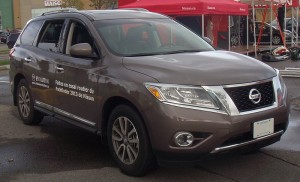 Next we take a look at the 4WD trim level of the 2014-2017 Nissan Pathfinder. The IIHS predicted a driver death rate of 20 between 2015-2018, with 7 predicted fatal multiple vehicle crashes and 14 fatal single vehicle crashes with 12 of them occurring from rollovers. As we’ve seen in a number of other death rate analyses, the crash figures don’t add up to the predicted death rate due to statistical rounding. The exposure came from 450,004 vehicles years with a confidence bound of 3 to 37.
Next we take a look at the 4WD trim level of the 2014-2017 Nissan Pathfinder. The IIHS predicted a driver death rate of 20 between 2015-2018, with 7 predicted fatal multiple vehicle crashes and 14 fatal single vehicle crashes with 12 of them occurring from rollovers. As we’ve seen in a number of other death rate analyses, the crash figures don’t add up to the predicted death rate due to statistical rounding. The exposure came from 450,004 vehicles years with a confidence bound of 3 to 37.
Once again, the general idea here is that if 1 million drivers drove 1 million 4WD Pathfinders around for a year in the US, we’d expect 20 of them to die, with 2/3rds of those fatalities occurring in single vehicle crashes and the vast majority of those occurring from rollovers. These results aren’t linear, but they are proportional. In other words, when fatal crashes occurred in the Pathfinder, they typically were single vehicle crashes and they were almost always due to rollovers when they came from single vehicle crashes.
It’s worth remembering that there is no provable statistical difference between the Pathfinder’s results and those of the Leaf, despite the nominal difference in driver death rates. This is evident because the confidence intervals overlap (0-14 in the Leaf, 3-37 in the 4WD Pathfinder), meaning the true driver death rates of both vehicles could be identical and the predicted driver death rate differences purely due to chance. In the absence of additional data (for example, P values), we cannot conclude that there is a statistical difference in these results.
The 2WD trim had a nearly identical (and again, statistically identical) driver death rate of 25 with a slightly larger confidence bound of 5 to 45 and a correspondingly smaller exposure level of 386,988. Once again, we cannot say the Leaf was statistically safer than the 2WD Pathfinder in the absence of more data, and we definitely can’t say the 4WD Pathfinder was safer than the 2WD Pathfinder due to their massively overlapping confidence intervals. The safest conclusion is that all three vehicles were statistically identical in safety.
2014-2017 Infiniti QX60 2WD – 0 driver deaths (0-26)
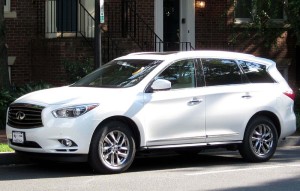 The Infiniti QX60 is essentially the Nissan Pathfinder with additional luxury features. A potential advantage of the QX60, which was formerly known as the JX35, over the Pathfinder, is the inclusion of advanced safety features such as lane departure or blind spot warnings.
The Infiniti QX60 is essentially the Nissan Pathfinder with additional luxury features. A potential advantage of the QX60, which was formerly known as the JX35, over the Pathfinder, is the inclusion of advanced safety features such as lane departure or blind spot warnings.
Unlike with the Pathfinder, the 2WD QX60 registered a lower driver death rate than its 4WD trim twin. The predicted rate was zero with a 0-26 confidence interval and 144,301 registered vehicle years of exposure.
As was the case with the Pathfinder, there was only a slight difference in driver death rates between the 2WD and 4WD trim levels and it was not statistically significant. The 4WD trim had a predicted driver death rate of 9 with all fatalities occurring from single vehicle crashes and a third of those from rollovers. The exposure was 243,080 registered vehicle years, leading to a tighter confidence interval of 0-20.
It’s worth noting here that the confidence intervals of both trim levels almost completely overlapped; that of the 2WD was smaller because there was more data in terms of more registered vehicle years, reducing uncertainty in the statistical model. Practically speaking again, there was no difference whatsoever in predicted safety across vehicles.
How can the Nissan Leaf be as safe as the Pathfinder or QX60 if the SUVs are so much bigger than the small car?
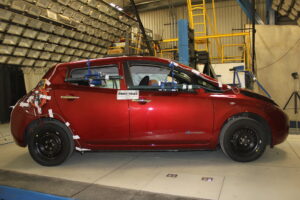
This is the part where we directly compare all three vehicles and 5 trim levels. Despite the fact that the Pathfinder and QX60 are much longer, wider, taller, and heavier vehicles than the Nissan Leaf, none of them were statistically safer. In other words, the math suggests that you’d be equally safe in any of the three vehicles.
Remember: despite popular belief, your big car, truck, or SUV will not protect you in a highway crash. Vehicular size isn’t nearly as important in most driving conditions as adherence to best practices in driving behaviors and in road selection.
We can’t say there was a difference between any of the vehicles because all of their confidence bounds overlapped, and in some cases, quite heavily. The 95% confidence bounds tell us where the true driver death rate would be located 95% of the time we looked for it by sampling the cars and drivers (e.g., sampling 1 million drivers driving 1 million Leafs for a year or 2 million drivers driving 2 million Pathfinders for 6 months or 250,000 drivers driving 250,000 QX60s for 4 years, etc).
According to the model, the true driver death rate of the Leaf would almost fall between 0 and 14 while that of the 4WD Pathfinder would almost always land between 3 and 37. The 2WD QX60’s true driver death rate would almost always land between 0 and 26. Statistically speaking, we can’t say any of these vehicles is safer than the other without more data. This applies as well to the 2WD Pathfinder with its 5 to 45 confidence interval and the 4WD QX60 with its 0 to 20 confidence interval. Practically speaking, all four of these vehicles provided the same levels of safety to their drivers.
Is it possible the Nissan Leaf is actually safer than the Pathfinder?
I suspect there’s a chance that there was a significant difference between the Leaf and the Pathfinders since the majorities of their confidence intervals did not overlap; the Leaf only shared 34% of its confidence interval with the 4WD Pathfinder (3-14, or 12 parts of its range vs 3-37, or 35), and only 24% of its confidence interval with the 2WD Pathfinder (5-14, or 10, vs 5 to 45, or 41). However, once again, without additional data, I can’t say that this wasn’t due to chance. And if the difference weren’t due to chance, it would be in favor of the Leaf, meaning Leaf drivers had a lower fatality rate than Pathfinder drivers in the model and calendar years observed.
What about the Pathfinder vs the QX60? Is one safer than the other?
Once again, there was no statistically significant difference between the two that can be declared without additional data. While there were nominal differences in the predicted driver death rates, there were once again significant statistical overlaps in confidence intervals, and the safest conclusion (and most logical one) is that the essentially identical vehicles performed essentially identically in real world conditions. If there actually were a safety difference between the vehicles in the data, I would expect it to come from driver differences–namely that QX60 owners might be more careful drivers due to driving more expensive vehicles or being more educated drivers (who are less likely to engage in risky road behaviors) or being more likely to use seat belts. It’s also possible that the differences, if any existed, could have come from additional safety features in the QX60. However, statistically speaking, both vehicles were likely the same in terms of safety offered.
Does this mean that my husband, wife, kids, or family are just as safe in a Nissan Leaf as they would be in a Pathfinder or QX60 or any other midsized SUV?
According to the IIHS’ math, yes. All three vehicles featured the same core safety features, such as good frontal and side crash scores, side airbags with head protection, and ESC, and I would expect these benefits to extend to passengers in addition to drivers. All of these vehicles are great choices for a family, and I would feel fortunate to have my family in any of them. Once you reach this level of vehicular safety, the difference in whether or not you make it home each day will have far more to do with how you drive and where you drive than what you drive.
In a nutshell, drive at safe speeds, follow best practices with car seats, and choose safe roads.
Following these principles will increase your family’s chances of both avoiding and surviving car crashes to a greater extent than any benefits you’d get from choosing any car you can currently buy or that the IIHS or NHTSA can possibly recommend.
 If you find my information on best practices in car and car seat safety helpful, you can buy my books here or do your shopping through this Amazon link. Canadians can shop here for Canadian purchases. It costs nothing extra to do so, but when you shop through my links, a small portion of your purchase, regardless of what you buy, will go toward the maintenance of The Car Crash Detective.
If you find my information on best practices in car and car seat safety helpful, you can buy my books here or do your shopping through this Amazon link. Canadians can shop here for Canadian purchases. It costs nothing extra to do so, but when you shop through my links, a small portion of your purchase, regardless of what you buy, will go toward the maintenance of The Car Crash Detective.

